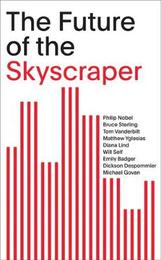
|
The Future of the Skyscraper
Paperback / softback
Main Details
| Title |
The Future of the Skyscraper
|
| Authors and Contributors |
Edited by Philip Nobel
|
| Series | SOM Thinkers |
|---|
| Physical Properties |
| Format:Paperback / softback | | Pages:128 | | Dimensions(mm): Height 165,Width 108 |
|
| Category/Genre | Theory of architecture |
|---|
| ISBN/Barcode |
9781938922787
|
| Classifications | Dewey:720.1 |
|---|
| Audience | | Postgraduate, Research & Scholarly | |
|---|
| Illustrations |
With colour illustrations
|
|
Publishing Details |
| Publisher |
Distributed Art Publishers
|
| Imprint |
Distributed Art Publishers
|
| Publication Date |
10 August 2015 |
| Publication Country |
United States
|
Description
Engines of industry, expressions of ego or will, tall towers are nonetheless, when they pierce the shared skies, intensely public. We may ask of them artistic questions: what do we make of these things we make? What do these forms mean? But also, because architecture is forever tied to real life, we may ask of them questions of a political, economic and technological nature - as well as those, touching on the body and the mind and the soul, that we may simply call human. In this volume, Bruce Sterling describes four possible futures that might shape future towers, presenting a chooseyour- own-adventure of potential futures for architecture, some of them terrifying in their nearness. We peer up at skyscrapers old and new, visit their highest floors, turn them this way and that to see them clearly through the psychology (Tom Vanderbilt) and physiology (Emily Badger) of living and working on high, and through the lens of policy in the low-rise counterexample of Washington, DC (Matthew Yglesias). Diana Lind tests the idea of tall against the more sprawling needs of those spatially mundane but transformative new economy industries that may well be the supertall clients of the future. Will Self looks back in literature, film and recent urban history to write forward toward a new understanding of the tower in the popular imagination. Dickson Despommier shares a comprehensive vision of an ecological future, in which towers, perhaps supertalls, would necessarily play a crucial role.
ReviewsFrom the psychological and emotional effects of living in the sky to the influence of new economies and the latest trends in vertical farming, The Future of the Skyscraper touches on many facets of its complex subject, and reads like a well thought-out workshop with riveting speakers. Much like a densified modern city, it packs a great deal into a small tract.--Catherine Sweeney "Azure"
|